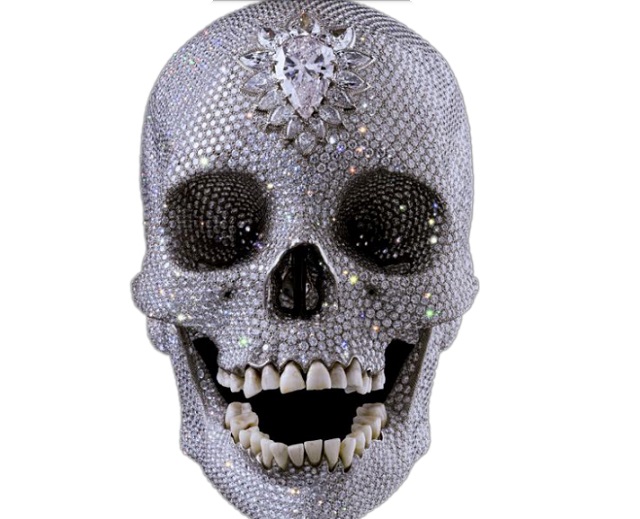
A perfect excuse to revisit originality
| DOMINIC MUWANGUZI | Damien Hirst’s name spells real money in the global art fraternity. A recent report listed him among the 1000 richest people in the UK with a net worth of about US$300 million. His art commands high prices though he has other business investments. Some feature his art as a main attraction. And most of it is “controversial” – because it belongs to him but is not created by him and some of it is banal and repetitive; created by an army of Hirst’s assistants.
Death, for example, is his favourite subject. He did a platinum skull work titled `For the Love of God 2007’ that evokes feelings of morbidity. But ironically, the skull is covered in 8,601 diamonds and belonged to a European who died in the 17th century.
Some say this makes Hirst’s art not original and disgusting. He is considered a sell –out who “only appeals to rich art collectors with questionable taste”. Yet Hirst continues to make mind-boggling sales and his art often graces international museums and art auction houses.
The artist is not bothered by extreme criticism. “I can‘t wait to get into a position to make really bad art and get away with it,” he once said.
For him the real creative act of art is its conception, not its execution. After all, Andy Warhol had a factory and so does Jeff Koons who has several assistants working for him.
So should artists simply make copies of their art and commodify it for huge sales? Locally, Hood Juuko and Edison Mugalu have successfully commercialised their art. Their approach to art is to sell as many works as possible.
Mugalu paints the waterscapes and city scenery predominantly with a touch of perspective and light control. His work is repetitive, predictable and obviously bland. Yet the artist has over the years emerged as one of the most selling artists on the Uganda contemporary art scene- the subject of price remaining relative.
Similarly his contemporary, Juuko is an iconic figure for his art that prolifically captures wild beasts on his canvases in realistic style. Few artists are as intuitive and flexible as Juuko. His eclectic repertoire includes sculptures and paintings. He is also an art manager, gallerist and property owner. In 2017, the artist landed an advertising deal from Canon Camera’s latest series.
The notion of commodification of art has relentlessly been fought in certain circles of the global art market. Its critics claim it compromises quality and originality. But of what relevance is yesterday’s attitude to today’s markets- including those of art- that are more liberal? Today, the market shifts almost every second of the hour. That means producers of any commodities have to change their wares rapidly. So Hirst and others are possibly just paying attention to the unprecedented market and writing history.
****
 The Independent Uganda: You get the Truth we Pay the Price
The Independent Uganda: You get the Truth we Pay the Price


